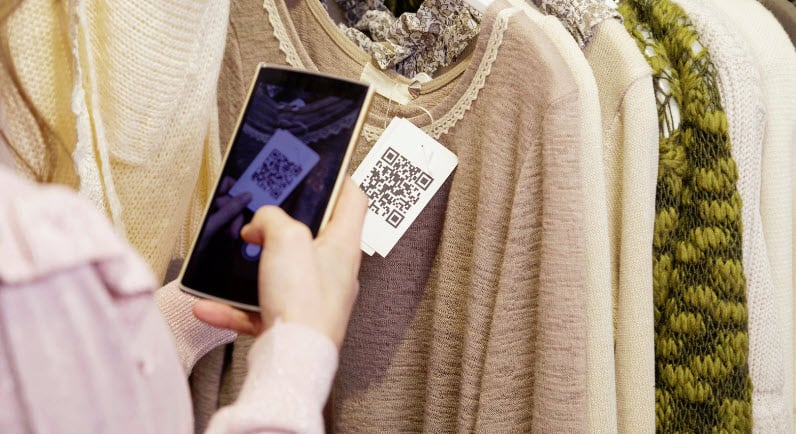QR codes are rising across the application industry during the pandemic.
In 1994, the Quick Response (QR) code evolved from typical scanning barcodes. Notably, the QR code is nearly 10 times faster than the original barcode. At first, QR codes were mainly available as mobile applications on smartphones. However, this robust tech is now used for numerous services, processes, and procedures across the world. As a mobile application developer, it is essential to understand why the QR code is so prevalent in the industry today. This way, you can build applications that are best-suited for your clients’ needs. Read on to read more about how QR codes are rising across the application industry during the pandemic.
Contactless Payments
First, QR code readers are on the rise in contactless payment applications. For example, PayPal recently rolled out a new feature in its mobile app allowing customers to pay by scanning a QR code. With this feature, clients can pay at restaurants, shops, farmers’ markets, and other retail locations by scanning a QR code with their smartphone camera. Importantly, this makes it easier for small merchants to offer sanitary, touchless payment methods. Of course, this is key to promote business safety and hygiene, especially during COVID-19. With low setup costs, more small businesses are likely to start using QR codes to enable safe contactless payments. Similarly, payment applications may integrate more QR codes as well to keep their services convenient for customers. In short, many developers are leveraging QR code payments to stay ahead during the pandemic.
Expanding Application Resources
Next, QR codes are rising as application resources expand. For example, many enterprises use JFrog Pipelines to ship updates faster and automate DevOps processes in their company. With CI/CD integration and infrastructure, teams can use this to automate everything from code to production. Indeed, this tool set streamlines deployments to different platforms like Docker as well as alternate platforms, known as helm kubernetes. Additionally, many programming companies have leveraged these pioneering build platforms to develop custom QR code generators. Using these tools, it is significantly easier and more efficient for developers to incorporate QR code technology into their applications. Definitely, expanding application resources such as automation tools and QR code generators are pushing the rise of quick response codes.
Digital Restaurant Menus
In addition, restaurants are also using QR codes to display their menus in digital formats. With this innovation, customers can order their meal without touching menus other customers have used. Of course, this is also key to promote safety and sanitation during the pandemic. Plus, restaurants that use disposable paper menus can reduce their printing costs and waste. Notably, restaurant business owners are attracted to QR code menus due to their key hygienic and convenience benefits. Indeed, families appreciate that they can sit down at a table only touching their personal items before eating. Absolutely, many businesses are adopting QR code restaurant pandemic menus for orders.

Product Packaging
Moreover, QR codes on product packaging have been critical during the pandemic. QR codes provide a great way to provide more information about products. These codes are quickly becoming common practice for all consumable items. Adding QR codes, buyers can quickly learn about product nutritional facts, as well as unwanted additives, such as GMOs. In addition, customers do not have to pick up the product to read its information. During COVID-19, this has a huge impact on grocery shopping experiences. After all, customers no longer need to touch individual products, which greatly promotes in-store safety. Indeed, customers can read about the product without touching it and spreading germs. Certainly, product packaging is driving QR code expansion.
Mail Marketers
Furthermore, the mail marketing industry is also driving QR code growth during COVID-19. Indeed, many direct mail marketers and brands have included QR codes on their deliverables. Importantly, this makes it much easier for customers to access their mobile applications and websites. In addition, marketers are using QR codes to connect customers with augmented reality (AR) experiences as well. For example, a furniture catalog might include a QR code on the back of the magazine directing consumers to their AR web feature. Here, consumers might be able to see what certain pieces of furniture look like in different rooms of their homes. Undoubtedly, the mail marketing industry is taking advantage of QR codes to increase mobile app and web page traffic.
QR codes are rising across the application landscape during the pandemic. First, contactless payments are driving the use of QR codes in the retail industry. Next, expanding application resources make it easier for developers to incorporate QR scanners and codes into their apps. In addition, digital restaurant menus are also driving the surge of QR codes. Moreover, QR codes are becoming a norm for product packaging. Furthermore, mail marketers are using QR codes to increase web page traffic and mobile application use. Consider these points to learn about why QR codes are rising across the application landscape during the pandemic.
